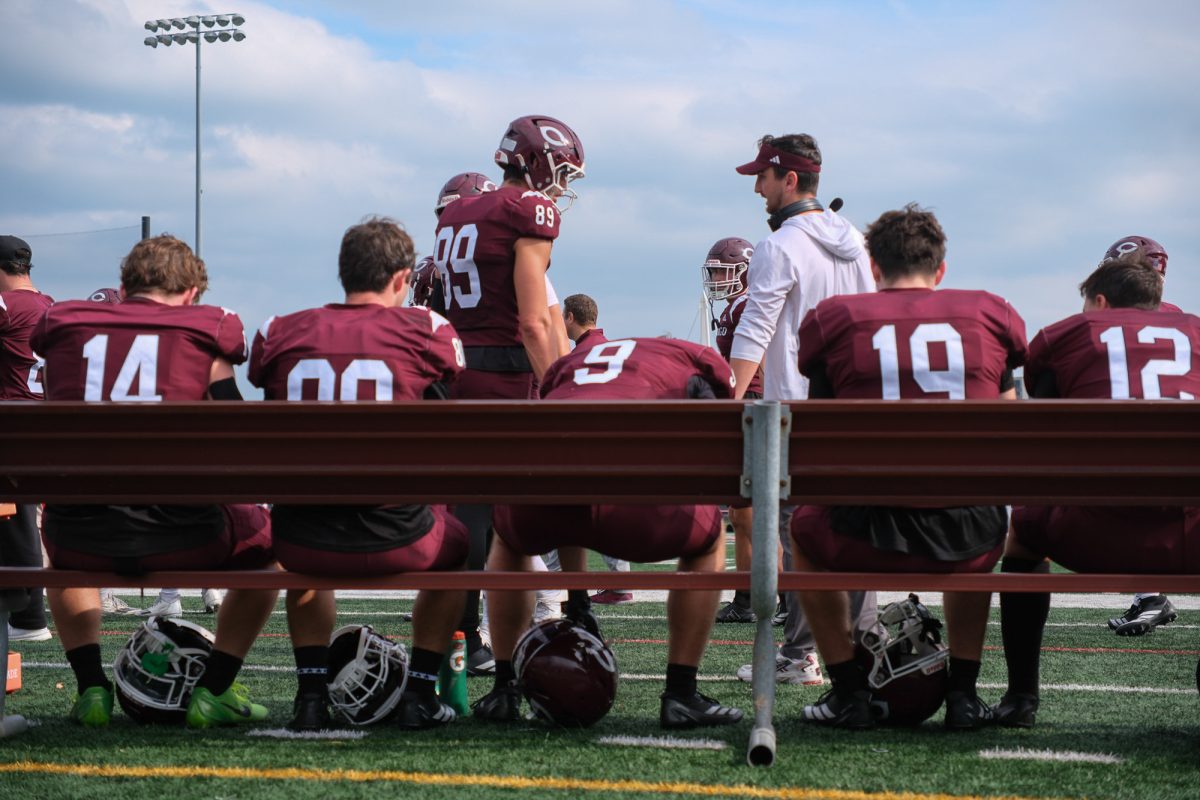When it comes to Chicago’s reputation as an academics-over-athletics kind of school, the football team catches most of the flack. It was their field that got replaced with a library, and it was their team that got erased from Chicago athletics from 1939 to 1969.
This year, the team is tired of being kicked around. “Raising the bar to raise expectations” has become the team’s theme for 2009, with the Maroons seeking their first winning season since 2005.
“The players all agreed that a higher commitment would be a good thing that would allow us to raise expectations,” said head coach Dick Maloney. “The players came in as good of shape as any football team I’ve ever had here, both strength-wise and conditioning.”
Chicago’s main focus for the season will be winning UAAs, a feat they last accomplished in 2005. The Maroons were voted last in the UAA preseason poll, finishing one vote behind Carnegie in the four-team league, but with a more experienced team coming back for 2009, the South Siders are looking to improve on last season’s 3–6 showing.
“[Last] season didn’t turn out as well as we would have liked it to,” third-year running back Tommy Parks said. “We were in a lot of those games for a long time, and I think the experience factor came into play, with us being young and making mental mistakes or just even making a physical mistake, not being sure about your assignment. I think that coming back this year, those guys know what it’s like, they know what it takes to win now, and it’s going to make everyone work harder to know their assignments.”
While Chicago’s roster has just eight seniors and 11 juniors (compared with 21 sophomores and 28 freshmen), the Maroons are rich in returning starters. Having graduated only six seniors last season, 17 players will be back in the starting lineup for 2009.
Parks, who redshirted a season ago after tearing his ACL in the second game of the season, returns to a strong backfield for the Maroons, joining 2008 UAA Rookie of the Year first-year Francis Adarkwa. During his freshman campaign, Parks averaged 6.2 yards per carry, totaling 703 yards and nine touchdowns.
On the receiving front, third-year Clay Wolff returns after leading Chicago in touchdown catches each of the last two seasons (with five in 2007 and eight in 2008). He was a favorite target for Chicago’s quarterbacks last season, hauling in 53 catches for 662 yards—36 more catches than any other player. The receiving core is perhaps Chicago’s most experienced position, with three juniors and three seniors anchoring that spot, and tight end fourth-year Mike Emerson will also provide a boost in the passing game.
Chicago also expects to get a boost from a strong defensive line, which features four returning starters from a season ago.
Overall, the team’s dynamics are similar to last year, but Maloney emphasized “preparation” as a key factor over experience, and with better preparation, the young players are better equipped to take advantage of starting opportunities.
“I think people look forward to that; they relish the opportunity of going out and perform well and showing what they can do and be a special ingredient in team’s success,” Maloney said.
There is no automatic bid to the NCAA tournament for winning the UAA, since the conference only has four teams. Still, Chicago faces a tough challenge in the first UAA contest, a home game on October 31 against defending UAA champs Case. The Founder’s Cup will be on the line the next week when Chicago heads to Wash U, and the Maroons will look to defend their 15-game Senior Day win streak when Carnegie comes to town on November 14.








